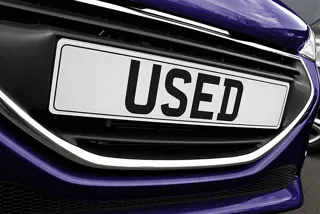Initial analysis of the impact of the coronavirus pandemic on used car values does not show a “seismic” shift in prices being achieved, suggests Cap HPI.
However, it is urging caution and warned vendors to expect “volatile” price movements over the coming weeks.
Cap HPI says that more vehicles are beginning to be sold at auction, with pricing data volumes increasing by 70% in the week commencing May 4, compared to two weeks earlier, in the middle of April.
From the start of the lockdown, the company stated that it would be analysing both used car retail and wholesale data, but it would not adjust used values while there was insufficient data to portray the market accurately.
Between March and May 10, no values were moved, but now that cars are selling in more volume, it says they need to be adjusted to reflect sold prices and allow the trade to buy and sell optimally.
The latest data shows that average wholesale selling prices have increased steadily from around £4,000 to more than £7,000, suggesting vendors are now more confident of selling slightly more expensive cars.
Early indications suggest a 2% to 5% downward movement for some of those models and ranges older than five-years-old.
Derren Martin, head of valuations UK at Cap HPI, explained: “The previous five years have seen an average drop of 4% during April and May at the five-year-old age point, and last year witnessed a 6.3% drop. So, the movements we are currently seeing in the middle of this pandemic are by no means seismic. We are reflecting the data as volumes slowly increase.”
Cap HPI reported a 2.2% fall in used car values on March 27. The total cumulative Live movement during March, leading to April’s monthly values, was an average drop of 2.2% (-£275) at the three-year, 60,000-mile point, the majority of which happened in the final 10-days of valuing. For newer used cars, the drop was 1.8% (-£425) at the one-year, 20,000-mile point.
In April, Cap HPI observed around 7,500 sold records and that number has already been exceeded by the middle of May.
Furthermore, both Manheim and CD Auction have reported they are starting online sales from this week, while BCA has continued its online offering during the pandemic.
Cap HPI says that, while wholesale records are still well below usual volumes, there is now enough data for prices to be reflected to assist the industry.
Martin continued: “We are now in a position to confidently move values in line with the market, taking a prudent approach using our editorial expertise, no algorithms, to analyse the data.
“Initially, we will be moving values on older vehicles in mainstream sectors, where there is enough evidence to accurately reflect current prices, by looking at each generation of model individually.”
However, he said: “No overall market movements will be applied. At the current time, younger used cars will not be moved in value as that end of the market is still very much in a hiatus.”
The data company says outliers, unrepresentative volumes and prices will not be reflected to move values.
It has also made the decision not to move values of younger cars or of cars in niche sectors, due to the paucity of data available.
For now, it says that valuation movements will only be made on cars between around five and 20-years old. The situation will be reviewed on an ongoing basis.
The analysts at Cap HPI are also analysing retail advertised prices in large volumes, although it says movements on retail price have been negligible.
Martin concluded: “We can see how retail and trade values operate differently in the market and this continues to be true during the pandemic.
“It’s more important than ever to take a careful, considered view from the evidence and it is likely to be a volatile time for used car prices over the next few weeks, whilst supply and demand dynamics work themselves out.
“We would recommend the industry keeps a very close eye on our daily valuations as they may move in either direction.”
For more on used values and the impact of coronavirus, see the next edition of Fleet News, published on May 25.





















Login to comment
Comments
No comments have been made yet.